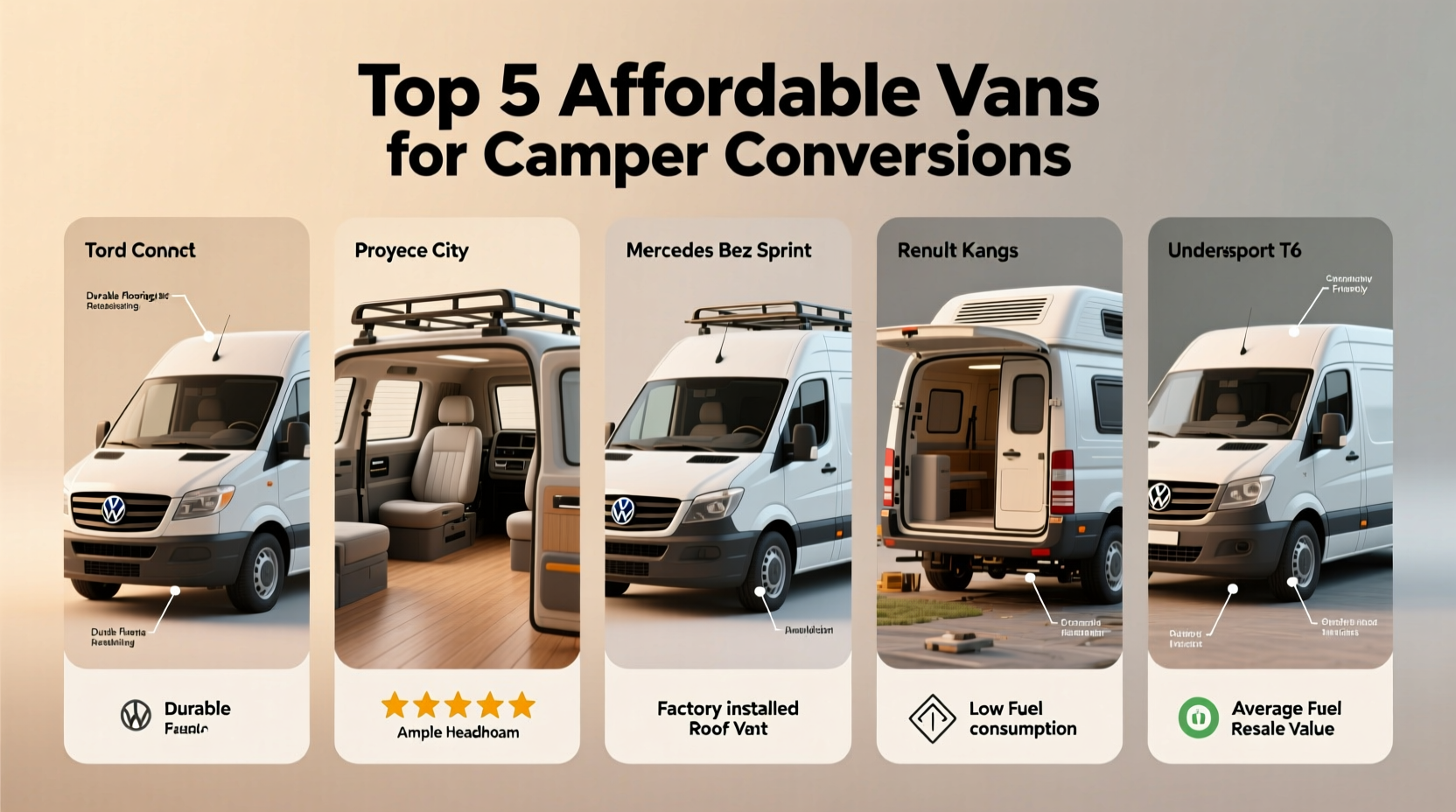Turning a cargo van into a functional, comfortable camper is one of the most rewarding ways to embrace mobile living without breaking the bank. While high-end builds grab headlines, many people successfully create livable, durable campers from modestly priced vans. The key lies in choosing the right base vehicle—one that balances cost, reliability, interior space, and conversion potential. With careful selection and smart planning, you can build a capable camper van for under $20,000, including the vehicle and materials.
Key Factors in Choosing an Affordable Camper Van

Selecting the right van starts with understanding your priorities: budget, mechanical reliability, fuel efficiency, headroom, cargo volume, and availability of aftermarket support. Not every van suits every lifestyle, but several models consistently stand out for their value and ease of conversion.
When evaluating affordability, consider not just the purchase price but also long-term costs like maintenance, fuel economy, and parts availability. Older vans may have lower upfront prices but could require expensive repairs if neglected. A well-maintained 10-year-old van often proves more economical than a neglected newer model.
Popular Budget-Friendly Van Models
The following models are widely regarded as top choices for affordable camper conversions due to their durability, spacious interiors, and strong resale markets.
- Ford Transit Connect – Compact, fuel-efficient, and commonly available through fleet sales or rental returns.
- Nissan NV200 – Smaller footprint ideal for city driving, though limited headroom.
- Mitsubishi Delica D:5 (imported) – All-wheel drive and elevated ride height make it great for off-grid travel.
- Dodge/Ram Promaster City – Similar to the Transit Connect but with slightly better cargo dimensions.
- Ford Transit (150/250 wheelbase) – Offers full standing height in longer versions; used models now entering affordable range.
- Chevrolet Express/GMC Savana – Rugged and spacious, though less fuel-efficient and harder to drive in tight spaces.
“Start simple. You don’t need solar panels and a composting toilet on day one. Focus on insulation, sleeping comfort, and weatherproofing.” — Jordan Lee, DIY Van Builder & Founder of Roadcraft Conversions
Top 3 Most Cost-Effective Vans for Conversion
Based on real-world data from conversion communities, resale trends, and builder feedback, these three vans offer the best balance of affordability, space, and reliability.
| Van Model | Avg. Purchase Price (Used) | Interior Height (ft) | Fuel Economy (MPG) | Why It’s Great |
|---|---|---|---|---|
| Ford Transit Connect (2015–2020) | $8,000 – $14,000 | 5.1 | 24–28 | Compact size, excellent fuel economy, easy to park, widely supported by aftermarket kits. |
| Dodge Ram Promaster City (2017–2022) | $9,500 – $16,000 | 5.3 | 22–25 | Front-wheel drive allows flat floor; boxy shape maximizes usable space. |
| Ford Transit 150/250 (2014–2018) | $12,000 – $18,000 | 5.8–6.0 | 18–22 | Full-height interior, strong engine options, abundant online build guides. |
The Ford Transit Connect stands out for urban dwellers who prioritize maneuverability and gas mileage. Its compact exterior belies a surprisingly usable interior—especially when fitted with a high roof kit. Meanwhile, the Promaster City’s front-wheel-drive layout eliminates the central driveshaft hump, creating a flat floor ideal for cabinetry and bed platforms.
Real-World Example: Sarah’s $15K Full-Time Camper Build
Sarah, a freelance photographer from Colorado, bought a 2017 Ford Transit Connect with 86,000 miles for $11,200. She sourced her materials gradually over six months, using reclaimed wood for cabinetry and repurposing a friend’s old marine battery. Her total build cost was $3,800, including insulation, flooring, a fold-up table, and a MaxxAir fan.
She prioritized warmth and comfort, adding closed-cell foam insulation and Reflectix throughout the walls and ceiling. A simple curtain partition separates the sleeping area from the entry. Solar came later—a 100-watt panel added after three months on the road.
“I didn’t want debt hanging over me,” she said. “By keeping it minimal and doing all the work myself, I got exactly what I needed: a dry, warm place to sleep and store gear while traveling for work.”
Step-by-Step Guide to Starting Your Budget Conversion
Building a camper van doesn’t require prior experience. Follow this sequence to avoid costly mistakes and stay within budget.
- Define your needs: Will you live full-time, weekend getaway, or travel seasonally? This determines space, power, and storage requirements.
- Set a realistic budget: Include $2,000–$5,000 for materials depending on complexity. Stick to it by prioritizing essentials.
- Select your van: Use resources like Autotrader, Craigslist, and Facebook Marketplace. Filter by mileage, service history, and rust presence.
- Inspect thoroughly: Check for frame rust, transmission issues, electrical faults, and HVAC operation. Consider a certified mechanic’s evaluation.
- Begin with structure: Insulate first, then install flooring and wall panels. These form the foundation of comfort and energy efficiency.
- Add systems incrementally: Start with ventilation and lighting. Add water, cooking, and solar only after testing your layout.
- Test and refine: Take short trips to identify design flaws—cold spots, poor weight distribution, or awkward storage.
Common Pitfalls to Avoid
Even experienced builders make mistakes when rushing or cutting corners. Being aware of common issues helps prevent costly rework.
- Skipping insulation: Poor insulation leads to condensation, mold, and uncomfortable temperatures.
- Overbuilding too soon: Complex cabinetry installed early may block access to wiring or plumbing later.
- Ignoring weight limits: Exceeding GVWR (Gross Vehicle Weight Rating) compromises safety and legality.
- Using non-marine-grade materials: Standard plywood absorbs moisture; opt for lightweight plywood or bamboo composites.
- Underestimating ventilation: Without airflow, humidity builds up quickly, damaging wood and electronics.
Essential Conversion Checklist
Use this checklist to ensure your build covers all critical areas before hitting the road.
- Structural
- ☐ Rust inspection complete
- ☐ Floor reinforcement (if needed)
- ☐ Insulation installed (walls, ceiling, floor)
- Interior
- ☐ Sleeping platform secured
- ☐ Ventilation fan (e.g., MaxxAir or Fantastic Fan)
- ☐ Lighting (LED, 12V)
- Utilities
- ☐ Freshwater storage (if applicable)
- ☐ Battery system (deep-cycle or lithium)
- ☐ Charging method (solar, shore, alternator)
- Safety & Legal
- ☐ Smoke and CO detectors installed
- ☐ Fire extinguisher onboard
- ☐ Vehicle registration and insurance updated
Frequently Asked Questions
Can I legally live in a converted van?
Yes, in most U.S. states and Canadian provinces, there is no law against living in a vehicle unless local ordinances restrict overnight parking. Always check municipal codes where you plan to stay long-term. Some cities ban sleeping in vehicles in public areas, while rural and BLM lands are often more permissive.
Do I need a special license to drive a camper van?
No, a standard driver’s license is sufficient for most converted vans under 26,000 lbs GVWR. Larger Class C motorhomes may require additional licensing, but cargo van conversions typically fall well below that threshold.
How much does a full DIY conversion cost?
A basic, functional conversion ranges from $2,000 to $6,000 in materials. High-end builds with solar, plumbing, and custom finishes can exceed $15,000. Doing the labor yourself saves thousands compared to professional builds, which often start at $30,000.
Final Thoughts: Building Smart on a Budget
The dream of van life doesn’t require a six-figure investment. By selecting a reliable, affordable van and approaching the build with patience and practicality, you can create a home on wheels that meets your needs without draining your savings. The most successful conversions aren’t always the flashiest—they’re the ones that function well, endure the elements, and reflect the owner’s true lifestyle.
Start small. Prioritize durability and comfort over luxury features. Let your needs evolve through experience, not expectation. Whether you're chasing mountain views, coastal roads, or cross-country gigs, the right van—and the right mindset—can take you there.









 浙公网安备
33010002000092号
浙公网安备
33010002000092号 浙B2-20120091-4
浙B2-20120091-4
Comments
No comments yet. Why don't you start the discussion?